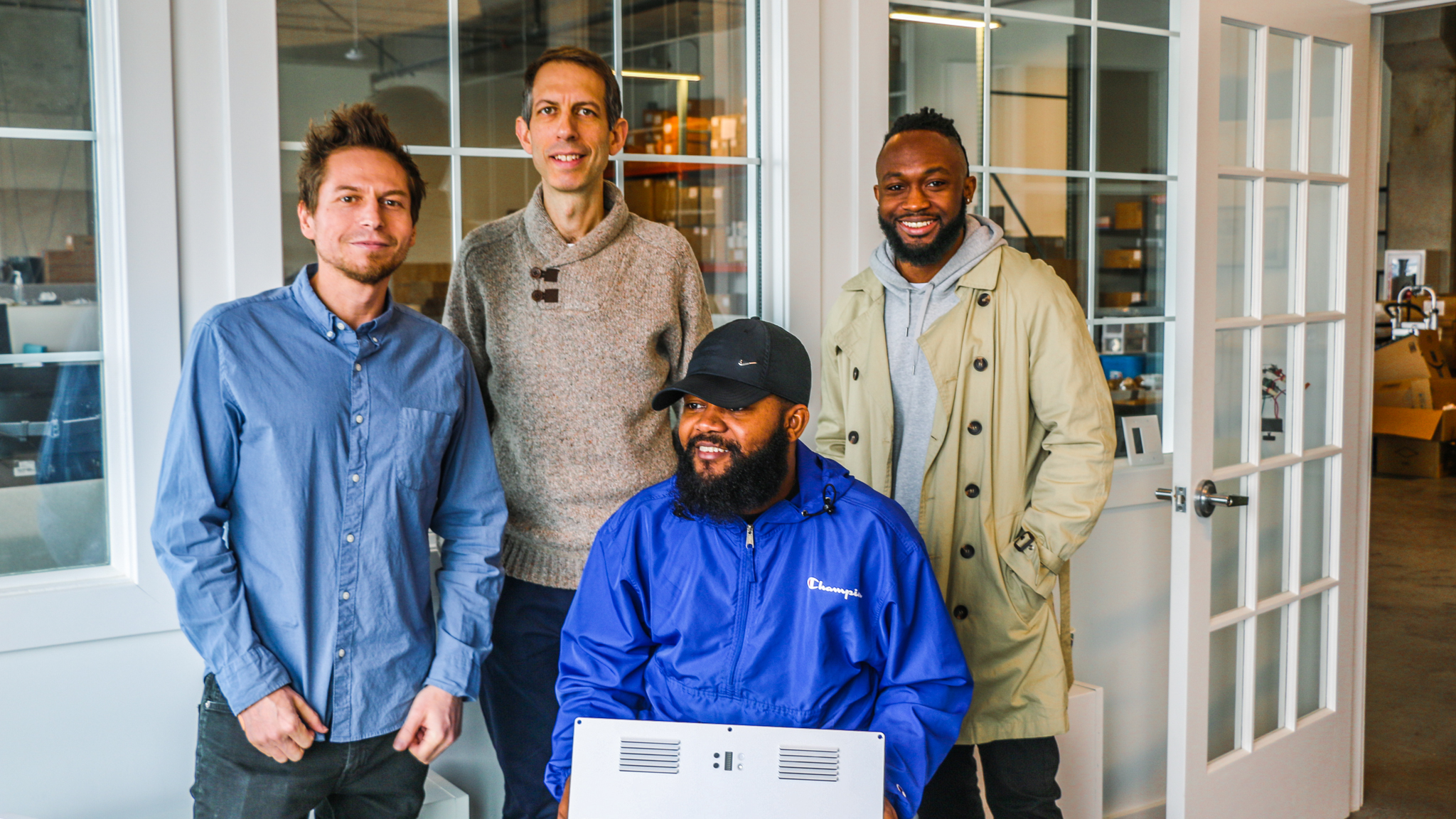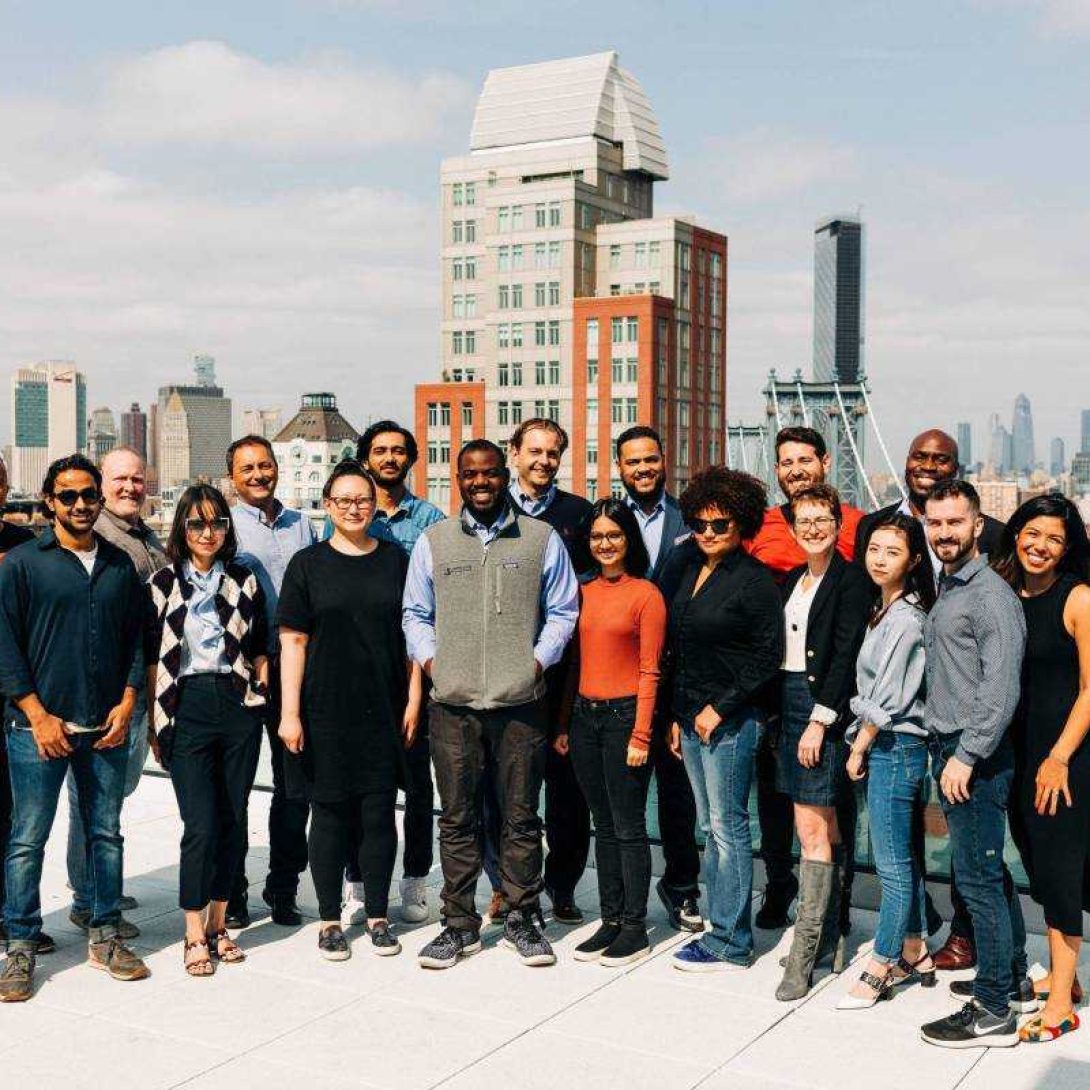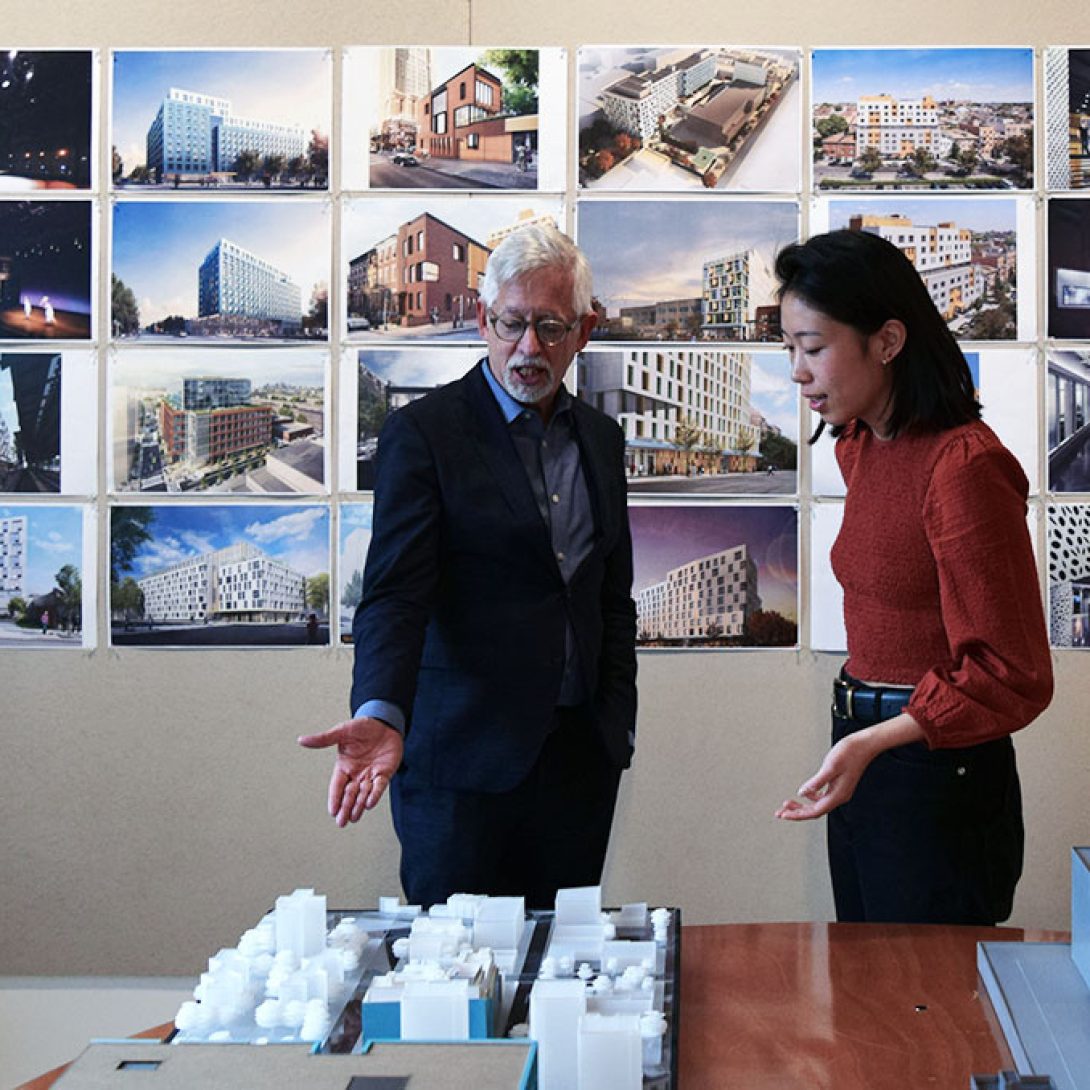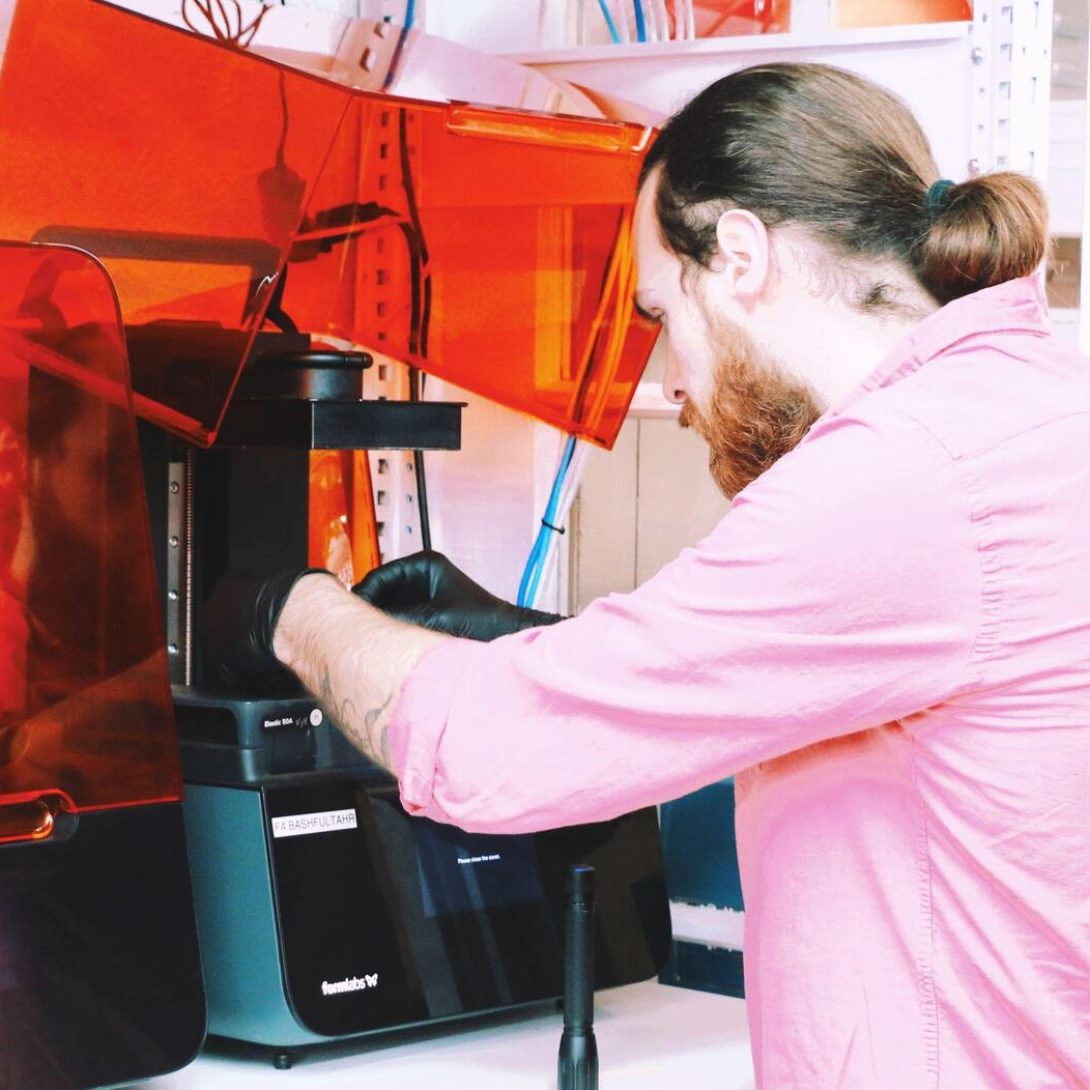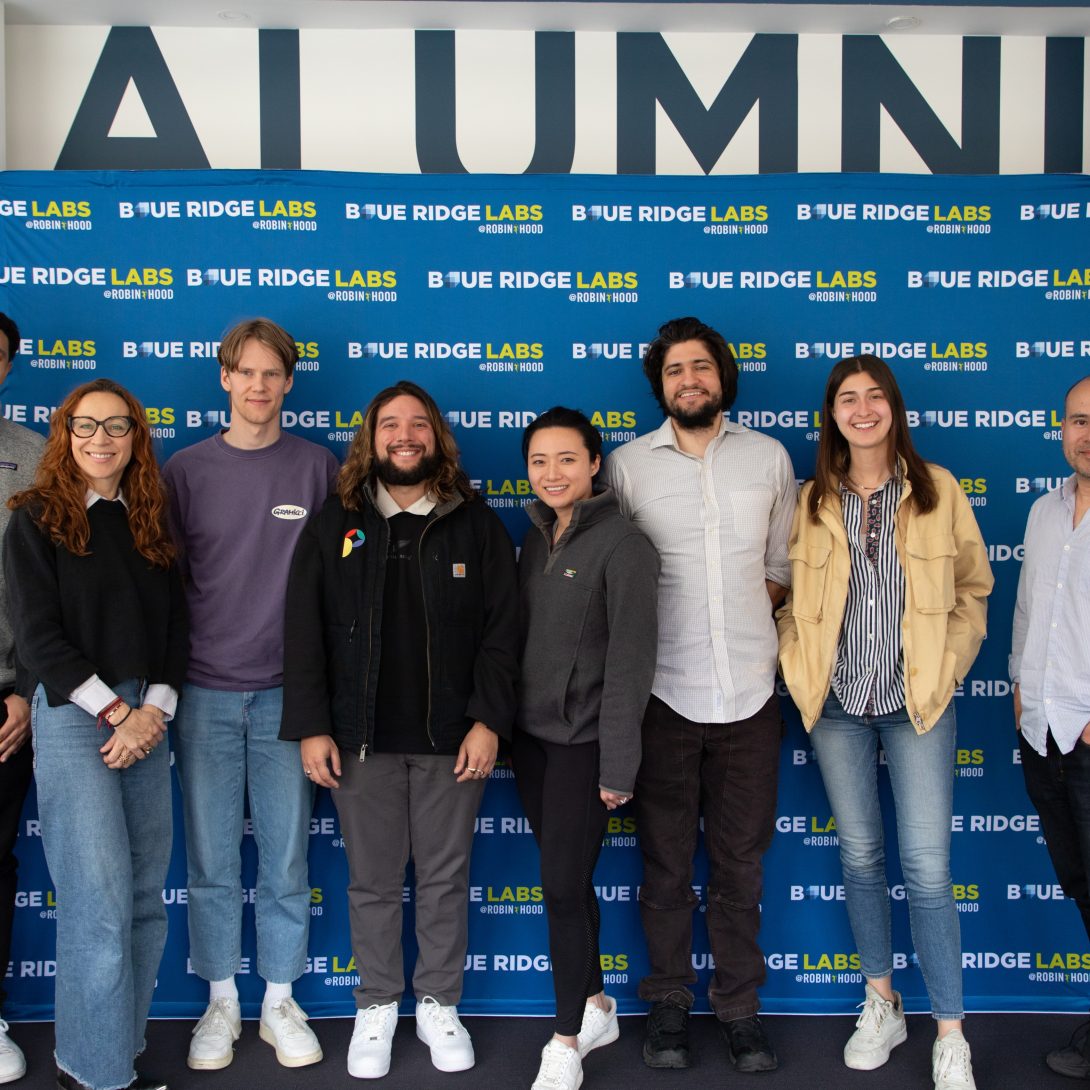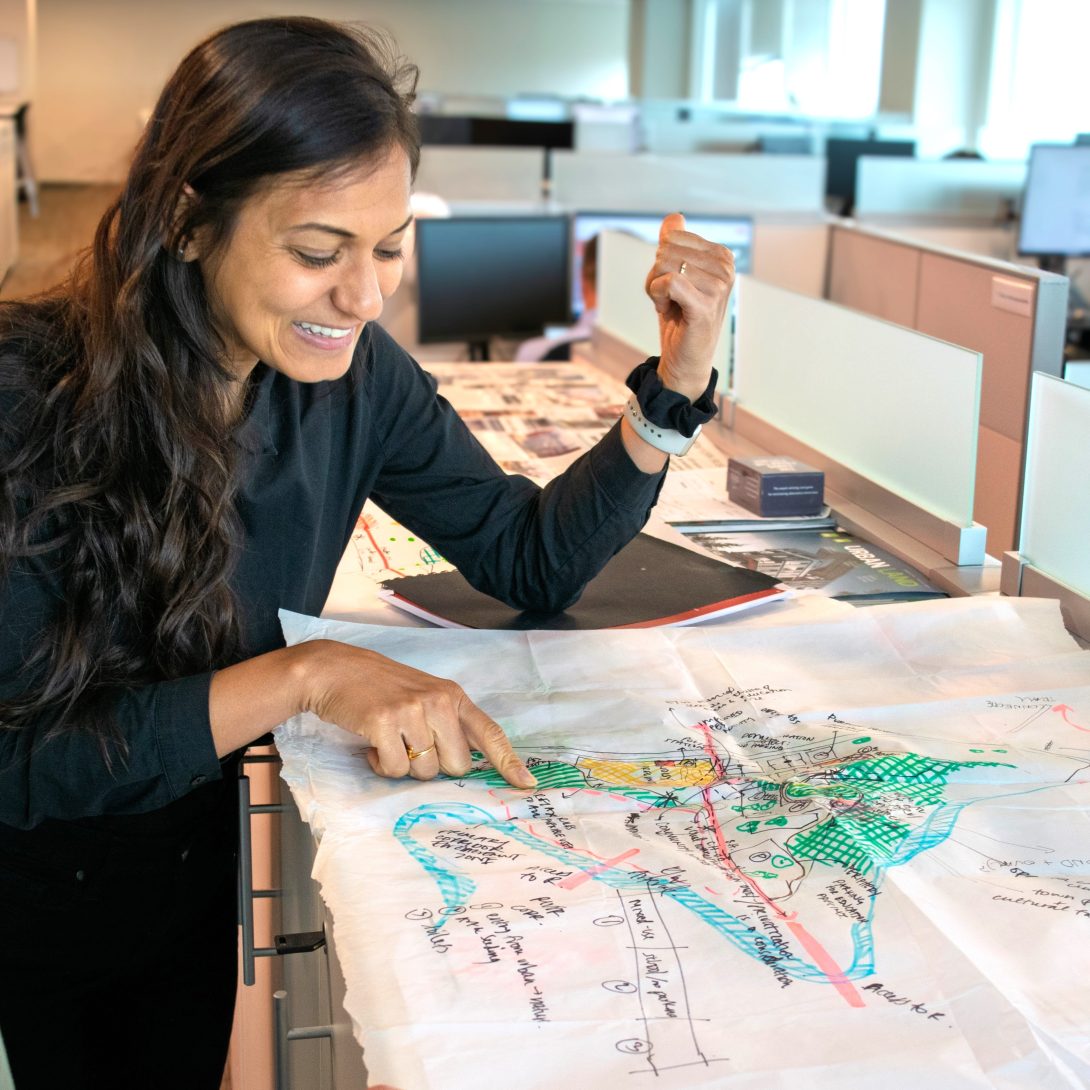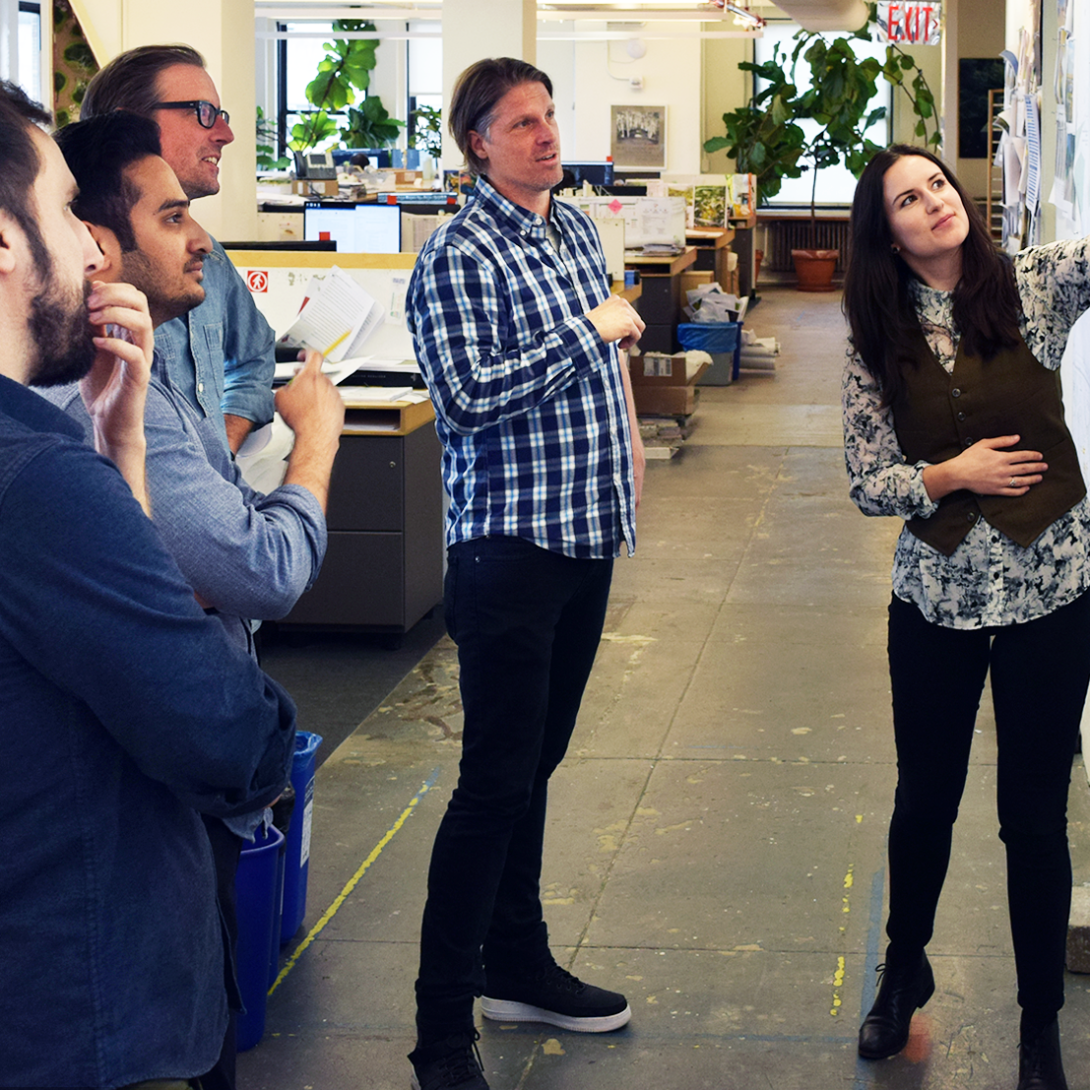Field: Climate Tech
Est: 2012
NYC HQ: Building 303, The Brooklyn Navy Yard
Kevin [formerly Radiator Labs] is tackling a persistent and wasteful problem for New York City’s older buildings: regulating steam powered radiators that lack temperature controls. Located in The Brooklyn Navy Yard, Radiator Labs has grown from 2 to 18 employees since 2012. As the company continues to evolve, they remain at the forefront of the climate tech sector, paving the way for innovative energy efficient solutions and expedited compliance with new decarbonization legislation. Matthew Isaacs, Vice President of Business Development and Sales shared the details behind the company’s mission and innovation.
Matthew Isaacs (MI): The technology that the company was founded upon was conceived in 2012 at Columbia University when our founder, Marshall Cox, was miserably overheated in his campus housing. The problem — which should be familiar to all New Yorkers — was the overpowering heat generated by the radiators. With a standard radiator, you can’t control room temperature, and the only way to attempt to do so is to open a window and let hot air out and cold air in; a super wasteful way to regulate temperature. To address this problem, Marshall started to develop a solution outside of the steam/radiator distribution system. Since the 1960s, there have been attempts to control or fix this problem by adding valves to the radiators, but they don’t work well. Our product, The Cozy, is an innovative solution that targets the issue and has no contact with the building’s plumbing system.
The Cozy is an insulated thermostatic radiator enclosure. That means it’s a smart radiator cover with insulation that traps the heat that the radiator emits inside of the cover. This is achieved through an electronics kit that includes a vent, fan, computer, sensors, controls, and a radio. When installed over a radiator, the sensor on the outside of the cover scans room temperature, and if the room falls beneath the desired set point the fan will turn on sending heat out into the room. Once the desired temperature is achieved, the fan will turn off and the remaining heat is trapped inside The Cozy. The air inside of The Cozy will heat up to the radiator’s temperature which slows the rate that the steam condensates inside of the radiator.
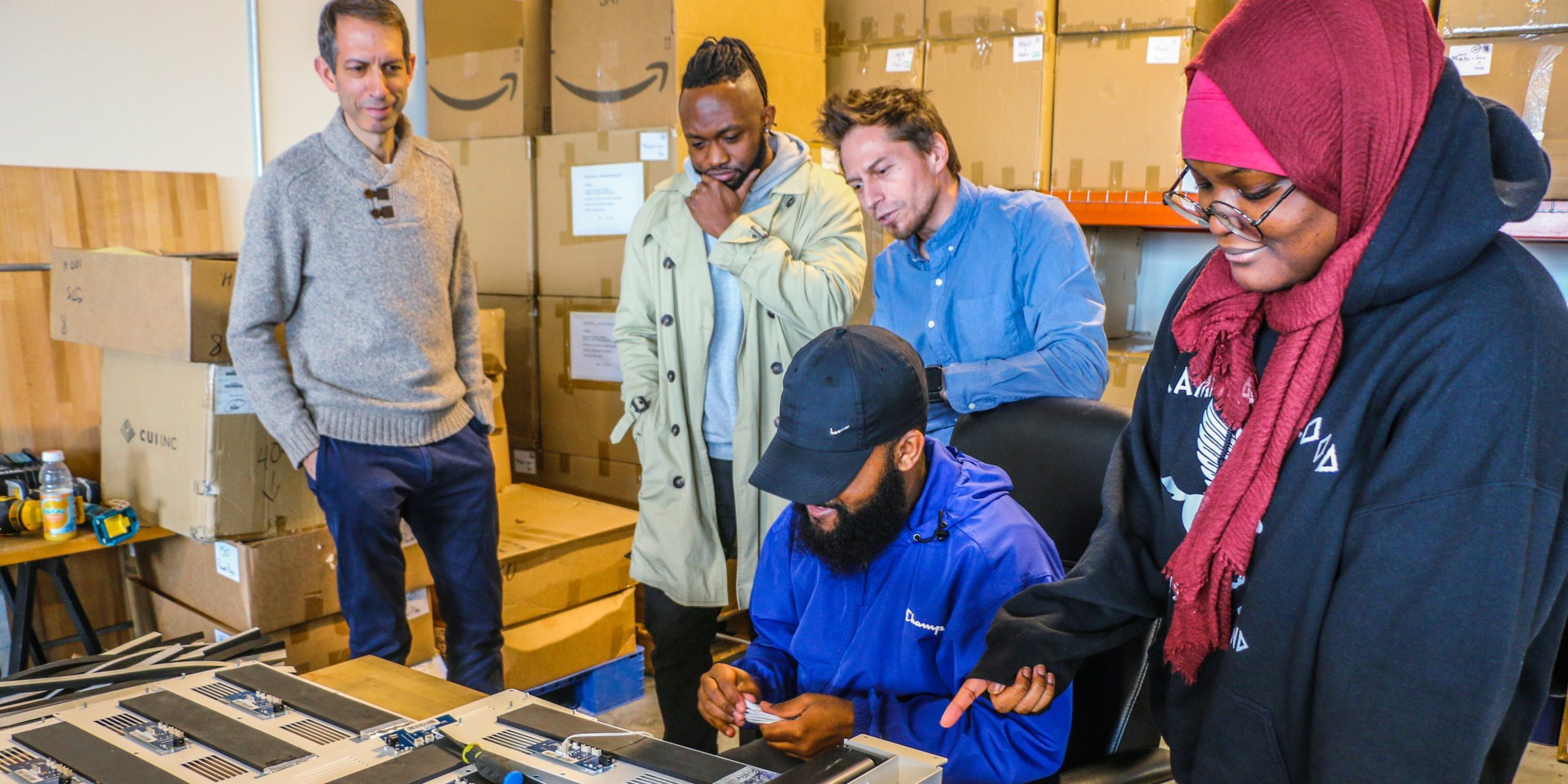
DBP: Who are your primary clients?
MI: Our team installs Cozys in all types of radiator-heated buildings, which can be multi-family properties, office, or commercial properties, as well as municipal buildings like schools. Our primary focus, however, is bringing our efficiency and comfort-improving technology to affordable housing in underserved communities. There are many stakeholders that benefit from our retrofits. The users of radiator-heated buildings enjoy the benefits of temperature control for the first time and the system also saves a tremendous amount of energy for the group operating the building. Because heat and hot water are usually generated in basements and not metered or paid for by commercial or residential tenants, whoever is paying for the gas or oil (landlords, management companies, co-op boards, etc.) are the people we’re working with to make buildings more energy efficient.

DBP: What are Kelvin’s plans for the company’s future?
MI: We’re really proud to be a Brooklyn-based company. We’re growing our team in order to expand our impact and the services we offer. The Cozy technology is great for all radiator-heated buildings and we’re going to complement it with what we call Hybrid Electrification, a concept we’re piloting right now. Hybrid Electrification includes the addition of a window AC that can run in reverse to make heat and works in tandem with The Cozy. The two units working together can decarbonize a legacy building’s heating system by about 80% in a climate like New York City’s. Through a very simple retrofit: Step 1: add The Cozy, Step 2: replace all the old window AC units with these new high-efficiency heat pumps that operate about 300 days a year. This new technology will allow older buildings to comply with the State’s goal of 80% decarbonization by 2050, today.
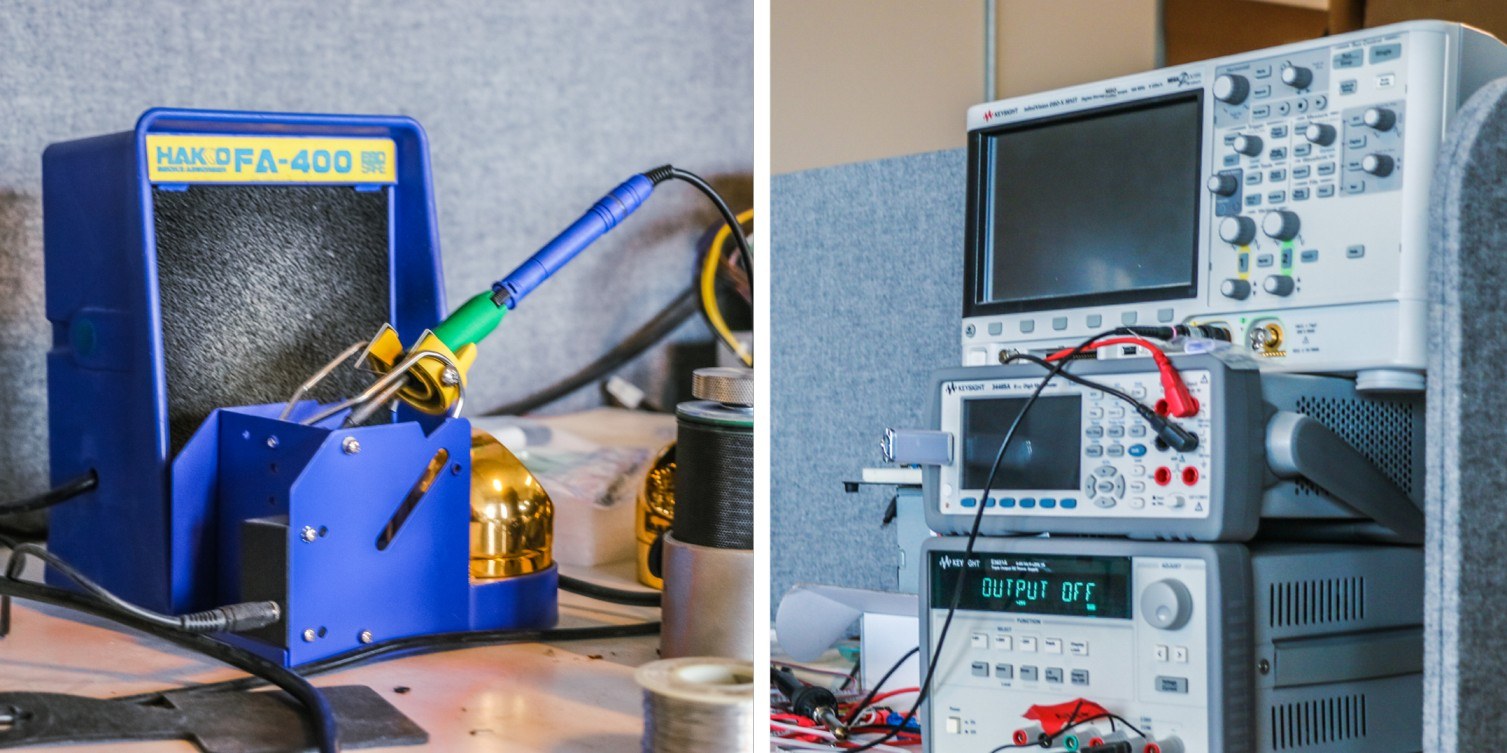
DBP: Can you explain the structure of your office and production line?
MI: We manufacture equipment in Ohio and Maine, so we have a completely domestic supply chain. We’re also beginning to offer an international option as well. After production, all the equipment and products come here, to The Brooklyn Navy Yard, for final assembly. For installation, we either work with large contractors that are already doing a lot of work in buildings and know how to install our product, or we use our in-house team.
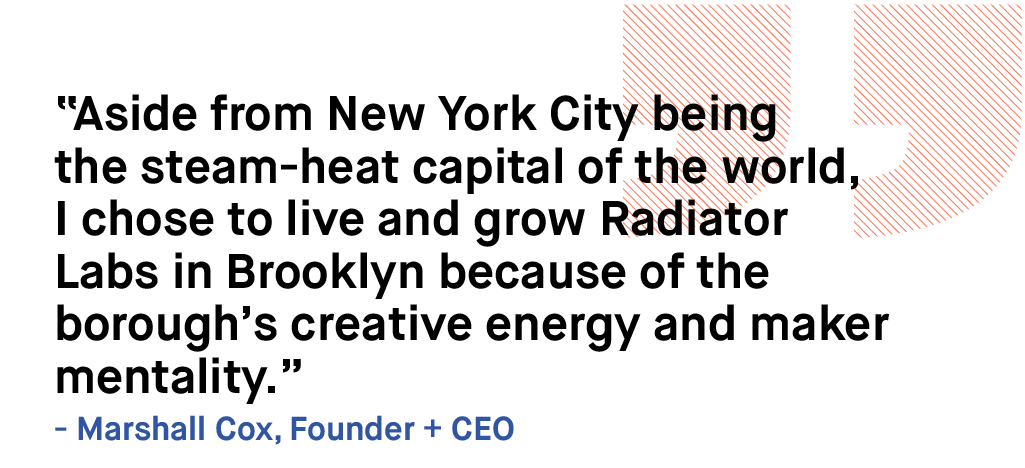
DBP: Where do you source your workforce from?
MI: We source our workforce from CUNY, The Brooklyn Navy Yard workforce development program, and Andromeda Community Initiative Inc., a non-profit that provides workforce development training. Everyone at Kelvin is passionate about solving the climate crisis and brings that drive to the work we do.
DBP: How did you end up in the Navy Yard and what is your relationship with the neighborhood?
MI: Kelvin was at NYU ACRE which evolved into the Urban Future Lab, a clean energy incubator, and when we left that program in 2017, we moved into The Brooklyn Navy Yard. We spent five years at the northern end of the Navy Yard and in 2022 moved to the southern end, closer to the commercial districts. It’s a great place to work because the environment is hospitable to light manufacturing. Being in this community is inspiring and awesome, there are a ton of makers all around us who we connect with and create partnerships with.
As building efficiency becomes an increasingly urgent issue, the innovators at Kelvin are responding with progressive solutions. With a workforce sourced directly from the Brooklyn community, their company is a hub of exploration and problem-solving to reach a more sustainable future. To learn more about Kelvin and their innovative technology, visit their website.
If you have a company and are looking to find space in Downtown Brooklyn, please contact realestate@downtownbrooklyn.com.
